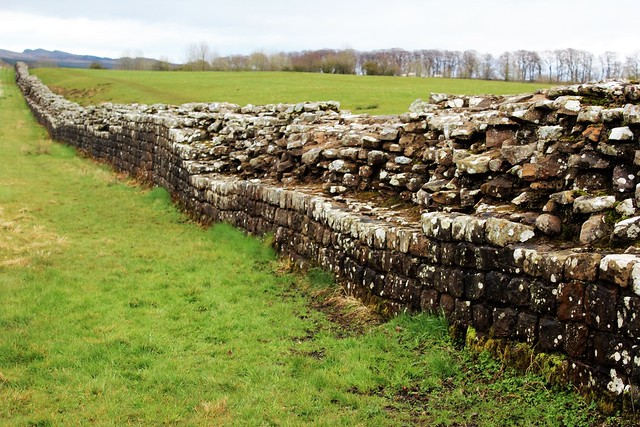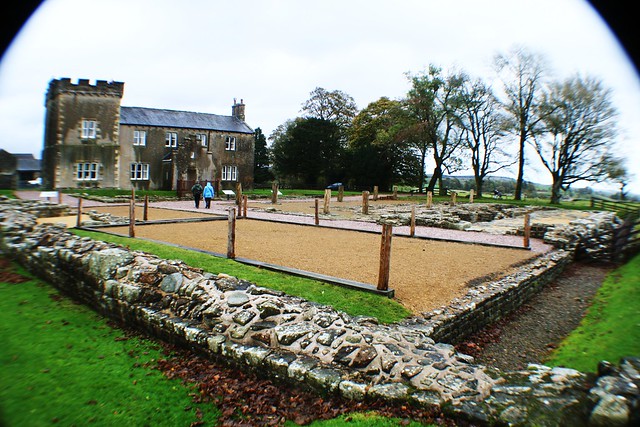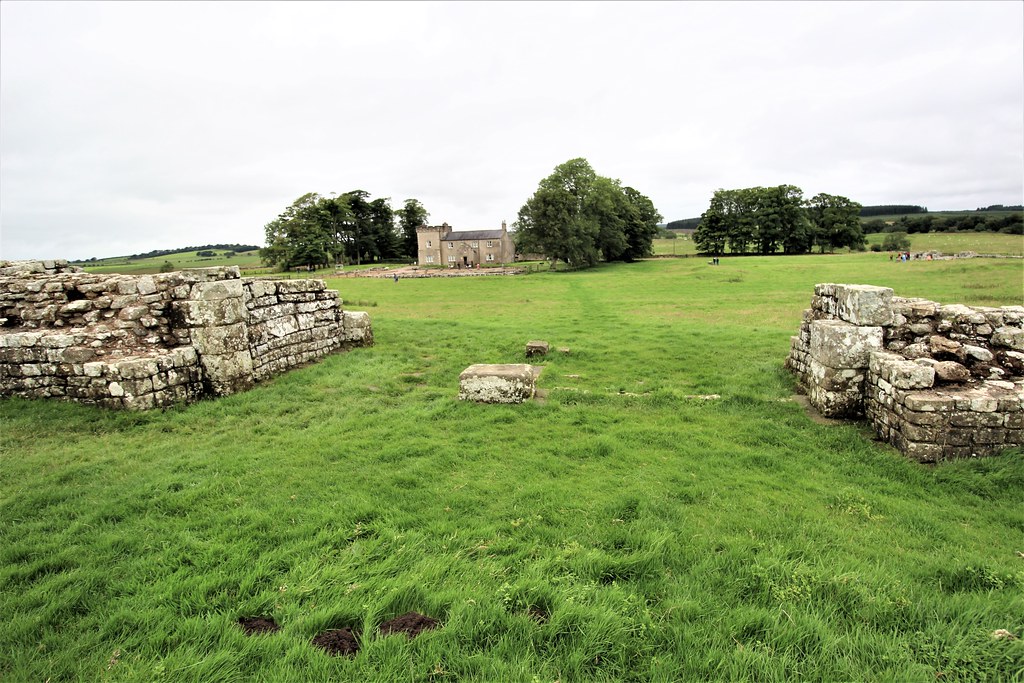Birdoswald Roman Fort on Hadrian's Wall
 Hadrian's Wall at Birdoswald Roman Fort
Hadrian's Wall at Birdoswald Roman Fort
This evening, I am posting information on Birdoswald Roman Fort on Hadrian’s Wall.
By way of background, the whole of the western thirty miles of the Wall, including the Birdoswald area, was originally built of turf but subsequently rebuilt in stone commencing at end of Hadrian’s reign (AD 138) and then again after reoccupation of the Wall in the 160s.
Plan of entire siteThe castellated house shown in the background of the above image has nothing to do with the Roman period but does represent continuity of occupation of the site from the Roman period through to the current day.
The Roman name for Birdoswald was Banna. More information:
- One of the twelve primary forts on the line of the Wall.
- Location is about 18 miles N.E.of Carlisle in N.W. England.
- Sits atop an escarpment overlooking the River Irthing.
- The north wall lies under the modern road but remaining three walls are visible.
- The visible stone fort replaced an earlier turf fort on a different alignment. Later fort integrated within the Wall.
- Regiment in occupation in 2nd century not known but in third and fourth centuries a unit from what is now Romania was stationed at Birdoswald, this was the First Aelian Cohort of Dacians. This force may have totalled about 500 men.
- The site continued to be occupied after the Romans departed in the 5th century. At this stage the granaries were converted into a large timber hall of a type favoured by the Anglo-Saxons. This may have the base of a local chieftain filling a power vacuum.
- There is evidence that the site continued to be occupied through to AD 800 (post-Roman) and then into the medieval and modern periods.
- Birdoswald is on the line of the Hadrian's Wall Path hiking trail) and as such attracts many passing visitors.
- There is a well resourced Visitor Centre together with shop and refreshment facilities on site.
View of site from South Gate
 Granaries and site of later Anglo-Saxon structure.
Granaries and site of later Anglo-Saxon structure.
Former bread oven








Comments
Post a Comment